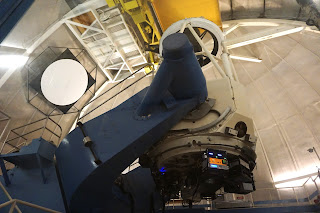March 11, 2017
March 11, 2017
This morning we
drove downtown to the annual Tucson Book Festival on the University
campus. I am dragging Aimee here
because many of the laboratories have an open house during the event. Our first stop is at the Science City tent
to get tour tickets.
After perusing
the hundreds of book seller booths we head over to the Optical Science lab. The
U of A is known for its Astronomy department.
An offspring of this focus (no pun intended) is world class optical
science. A major innovation has been
Adaptive Optics, warpable lenses that can eliminate the atmospheric distortion
of earth-based telescopes. We listen to
a short lecture on microscope advances.
All the new advances are using computing power to push the traditional
limits of optics. We also saw a demo on Holography and another on Thermal
Imaging with Infrared.
A couple doors
away is the offices of the National Optical Astronomy Observatory that runs
nearby Kitt Peak. They turned one of
the offices into a giant Camera Obscura. Also known as a pinhole camera, light
bounced off the exterior scenery passes through a small hole in the side of the
building and is magically projected onto a screen inside. I remember doing something similar as a kid
with a cardboard box to view a solar eclipse.
We finished with
a tour of the Insect collection of the Arthropod department. The manager showed us his archives of all
the insects found in the local area. Not surprisingly with our warm weather, it
is huge. As part of a community outreach project, he also identifies insects
for locals who bring in specimens.




